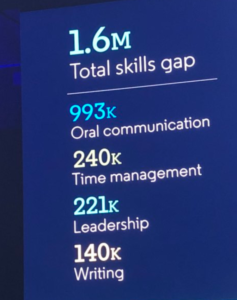Veteran’s Day was yesterday! I’m sure your social media team made a big deal out it. Send around a lot of American Flag IG and Twitter posts. Even put up a blog post on your site about how much you just love Vets! The problem is, it’s all a big fat lie!
You don’t love Vets! You love the concept of being politically correct and wrapping your company and brand around the American flag! It’s basically Stolen Valor what you’re doing on your career site, acting like you love to hire Vets!
If you really loved Vets you wouldn’t be trying to hire someone who led a platoon of a hundred soldiers into battle for a $12/hr job with no career progression! You wouldn’t be trying to hire someone who was responsible for hundred’s of millions of dollars of machinery and resources into a $17/hr warehouse job. But, that’s how ‘you’ love Vets, right? Give them a shitty job!
I’m not a Vet. Never served. Really never even thought about serving. My grandfather fought in WWII and he gave me his medals when I was a young boy. Told me stories. I have uncles and cousins who are Vets.
I’ve hired countless Vets in my career. I find that Vets, compared to normal civilian hires, perform better on average. I hired a Vet to come work as a Recruiter for me, when he had no recruiter training (his name is Brian McIntosh – go connect with him, he’s awesome!) He was a tanker by Army trade. Not really something that correlates into great recruiting skills normally, but here are the skills he brought to us:
- Dedication
- Works his ass off
- Team player
- Motivated
- Desire to learn
- Exceptional at networking with other Vets
- Colorful language! (Okay, I made that one up! But, hey, you spend some time in a hot tank and you’ll learn some colorful language as well!)
He normally would have been offered one of those $15/hr jobs. “Oh, you’re a tanker and have no real-world skills, that’s great we have a dead-end warehouse job for you to work in! We love our Vets!”
Think about how many great paying, salaried jobs you have that really can be taught to anyone. How many? 60%? 80%? That’s reality, right? Most of the jobs that we have can be taught to anyone with the desire, the motivation, dedication, and willingness to learn.
I’m not trying to dump on decent paying hourly jobs. I know we have to fill these as well with great people, and some of those jobs turn into great careers for people, but let’s be real, our Vets aren’t looking at those jobs as their first choice upon serving our country. They want career jobs that fit the skills and training they received while serving our country.
So, what can you really do?
My friend, Torin Ellis, came to the Michigan Recruiter’s Conference a couple of weeks ago and spoke about Diversity and Inclusion and made this comment – “You need to have a diverse recruiting team if you want to recruit diverse talent.”
So, if you want to hire Vets into real jobs in your company, you need to have Vets on your recruiting team! What we have found is our Vet recruiters know the environment and skills on both sides, so they know where a Vet will be most valuable in your organization based on those skills. A recruiter without this knowledge just looks at keywords on a resume, and thinks, “No fit” or “Hourly entry-level job”, not truly who this person is or could be for your organization!
Or you could also work with a Vet to come in and train your team around what jobs you have where Vets would be a great fit, and what questions they should be asking to find out what skills they really have. We find Vets aren’t the best at talking about some of the great skills they have, they don’t see as special, coming from a military environment.
Lastly, call out your hiring managers who say they support Vets, but then never hire a Vet when you put them in front of them. They aren’t supporting Vets, they just love wrapping themselves in the flag and acting like they support Vets.
Happy Veteran’s Day! Thank you for your service! If I can help you, please let me know.

